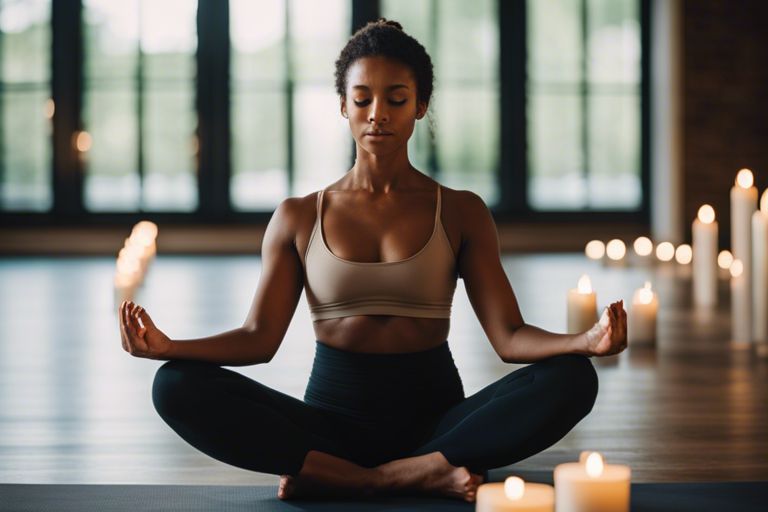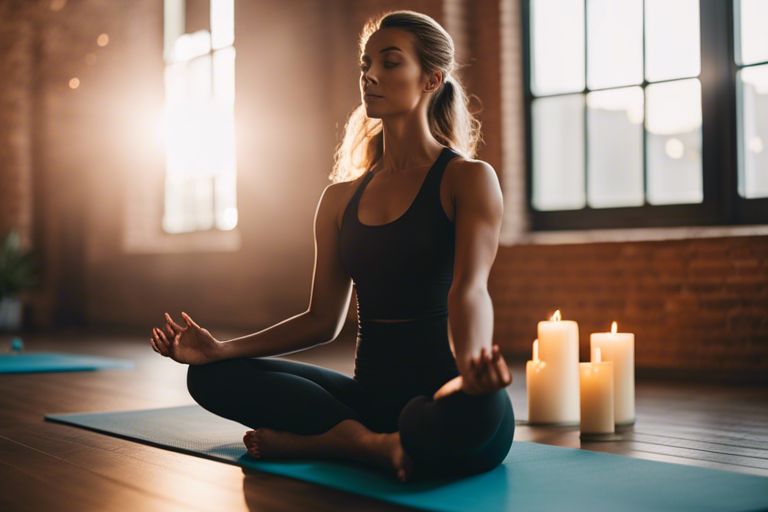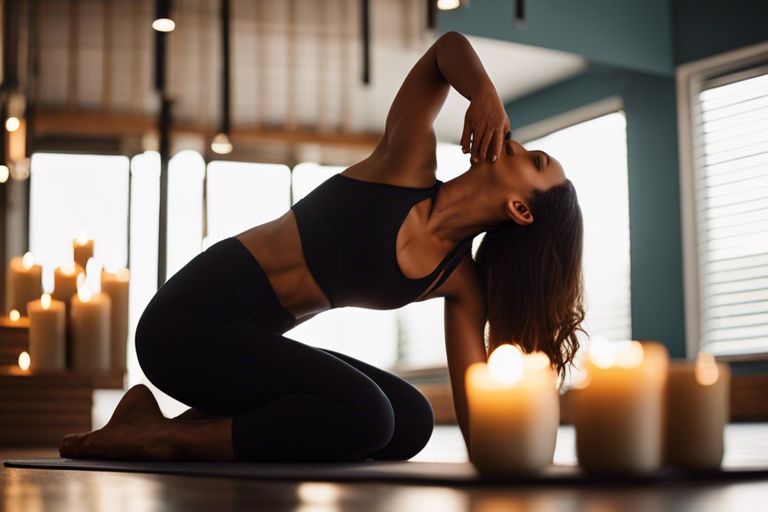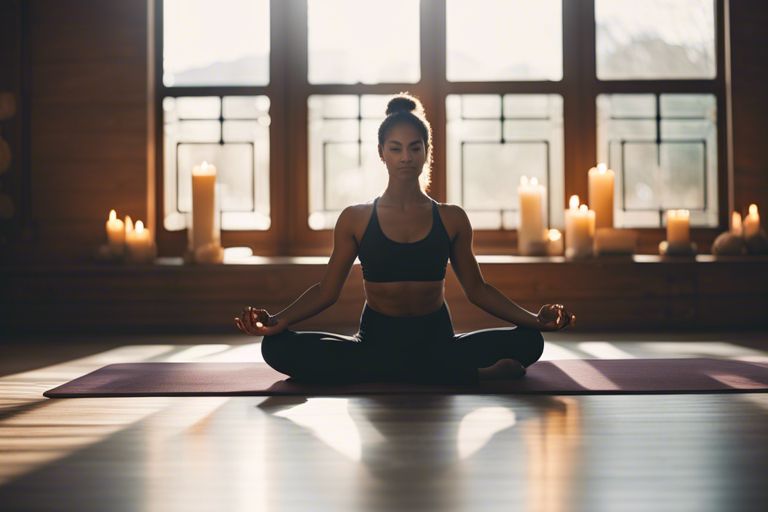Yoga can dramatically improve your flexibility, and slow flow yoga is an excellent practice to achieve this. By focusing on gentle, deliberate movements synchronized with your breath, you can gradually increase your range of motion. Incorporating slow flow yoga into your routine can reduce the risk of injury and help you develop long, lean muscles. With consistency and patience, you’ll notice a significant improvement in your flexibility and overall well-being. So let’s get started on enhancing your flexibility with slow flow yoga!

Key Takeaways:
- Slow Flow Yoga promotes flexibility: Emphasizing slow movements and holding poses for longer periods aids in improving flexibility in the body.
- Focus on breath: Connecting breath with movement in Slow Flow Yoga helps to release tension, increase relaxation, and enhance the overall practice.
- Listen to your body: Paying attention to your body’s limitations and sensations during practice is crucial for increasing flexibility safely and effectively.

Understanding Flexibility
What is Flexibility?
Flexibility refers to the ability of your muscles and joints to move through a full range of motion without any restrictions. It is an important component of overall fitness and plays a crucial role in your daily activities. Having good flexibility means that you can bend, twist, and stretch your body with ease.
Why is Flexibility Important?
To improve your performance in physical activities, prevent injuries, and enhance your posture, flexibility is crucial. When your muscles are flexible, they are less likely to become strained or injured during exercise or daily tasks. Additionally, good flexibility can help relieve muscle tension and reduce the risk of developing chronic pain in areas like your back, hips, and knees.
Understanding the importance of flexibility can motivate you to incorporate practices like slow flow yoga into your routine, as it focuses on gentle movements that gradually increase your flexibility over time. By committing to regular practice, you can enjoy the benefits of improved flexibility and overall well-being.
1. Start with gentle stretches to warm up.
2. Focus on breathing deeply and mindfully.
3. Move through poses slowly with controlled movements.
4. Hold each pose for a few breaths.
5. Listen to your body and avoid pushing too hard.
6. Practice regularly to gradually improve flexibility over time.
Preparing for Slow Flow Yoga
There’s no better way to start your slow flow yoga practice than by understanding what it entails. For a comprehensive guide to Slow Flow Yoga, check out Slow Flow Yoga: A Beginner’s Guide to Mindful Practice. This will help you familiarize yourself with the movements and breathwork involved in this style of yoga.
Tips for Choosing the Right Yoga Mat
- Make sure your yoga mat is thick enough to provide cushioning for your joints.
- Opt for a non-slip surface to prevent any accidents during your practice.
- Choose a mat size that allows you to move freely without restriction.
Any yoga mat that meets these criteria will help support your slow flow yoga practice and enhance your comfort during the session.
Factors to Consider for a Comfortable Practice Space
- Ensure your practice space is free of clutter to avoid distractions.
- Set the right ambiance with calming music or dim lighting.
- Position yourself near a ventilation source to keep the room well-ventilated.
Flow freely through the movements without any interruptions to fully immerse yourself in the practice. Assume that creating a comfortable environment will help you focus on your breath and movements effectively.
For instance, optimizing your practice space by adding elements like scented candles or important oils can further enhance your experience. The ambiance plays a crucial role in creating a peaceful and relaxing atmosphere for your slow flow yoga practice. Assume that adding these small touches can make a significant difference in your overall enjoyment and progress in this yoga style.

How to Enhance Flexibility with Slow Flow Yoga
Once again, slow flow yoga can be a fantastic way to enhance your flexibility. By moving mindfully through poses and focusing on your breath, you can increase your range of motion and improve your overall flexibility over time.
Basic Poses to Increase Flexibility
Some basic poses that can help increase flexibility include forward folds, lunges, and twists. These poses gently stretch your muscles and help to release tension in your body. By holding these poses and breathing deeply, you can gradually increase your flexibility and mobility.
Advanced Poses to Take Your Flexibility to the Next Level
While slow flow yoga is great for beginners, advanced practitioners may want to incorporate more challenging poses to further enhance their flexibility. These poses require strength, balance, and deep concentration to maintain.
-
Poses
Most Important Details These poses can help you target specific muscles and deepen your flexibility. Dangerous Details Be cautious and listen to your body to avoid injury while attempting these poses. Positive Details With regular practice, you can see significant improvements in your flexibility and strength.
While advanced poses like King Pigeon Pose or Wheel Pose may seem intimidating, with practice and patience, you can gradually work your way into these challenging postures. These poses can push your limits and help you unlock new levels of flexibility in your practice.
-
Poses
Most Important Details These poses require a strong foundation in basic poses to avoid injury. Dangerous Details Improper alignment or overexertion can lead to strain or injury, so listen to your body. Positive Details Regularly practicing these poses can lead to increased flexibility, strength, and body awareness.
Maintaining Progress and Overcoming Challenges
To enhance your flexibility with slow flow yoga, it is important to maintain progress and overcome challenges along the way. Consistency is key in your yoga practice to see continuous improvements in your flexibility. Here are some tips to help you sustain a consistent practice:
Tips for Sustaining a Consistent Practice
- Set specific goals for your practice to stay motivated.
- Regularly attend classes or follow online tutorials to keep your practice consistent.
- Find a yoga buddy to practice with and hold each other accountable.
The more you commit to your practice, the easier it will become to incorporate it into your routine. The key is to stay dedicated and enjoy the process of improving your flexibility through slow flow yoga.
Factors That May Limit Your Flexibility and How to Overcome Them
For some, certain factors may limit your flexibility progress in slow flow yoga. However, understanding these limitations can help you overcome them and continue to improve. Some of the factors that may impede your flexibility include:
- Physical limitations such as tight muscles or previous injuries.
- Mental barriers like fear or self-doubt that prevent you from pushing yourself in poses.
By addressing these factors and working through them gradually, you can prevent them from hindering your flexibility journey. Remember that progress takes time and patience, so be kind to yourself as you navigate through these challenges in your yoga practice.
Summing up
Presently, you have learned that slow flow yoga can greatly enhance your flexibility by incorporating gentle, intentional movements with breath work. By focusing on mindful transitions between poses and holding them for longer periods, you can increase your range of motion and reduce the risk of injuries. Additionally, the meditative aspect of slow flow yoga can help you connect with your body and improve overall wellbeing.
FAQ
Q: What is slow flow yoga?
A: Slow flow yoga is a gentle and meditative style of yoga where poses are held for longer periods of time. It focuses on deep stretching and mindfulness, helping to enhance flexibility and relaxation.
Q: How can slow flow yoga enhance flexibility?
A: Slow flow yoga helps enhance flexibility by allowing the muscles to relax and stretch gradually. Holding poses for longer periods of time helps to release tension in the muscles, allowing for increased range of motion and improved flexibility.
Q: Is slow flow yoga suitable for beginners?
A: Yes, slow flow yoga is suitable for beginners as it is a gentle and accessible practice. The slower pace allows for beginners to focus on alignment, breath, and mindfulness, making it a great practice for those new to yoga or looking to improve flexibility.











